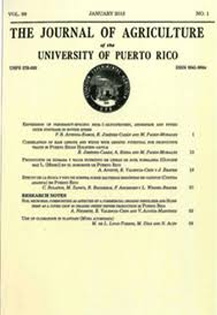Abstract
Exercise-induced pulmonary hemorrhage (EIPH) is a very common condition in racehorses and is characterized by an alteration of the respiratory system. Depending on the magnitude, EIPH causes bleeding in lung passages making breathing difficult. EIPH is evaluated by endoscopies on a scale from 0 to 5, with 0 corresponding to no hemorrhage and 5 to a severe condition. In Puerto Rico, the only preventive measure used is the administration of a diuretic 4 h before the race. A data set was analyzed to determine factors associated with the incidence of EIPH and the preventive effect of the diuretic. The data was supplied by Equus PR, Center of Veterinary Medicine, and the factors considered were month of the year, sex (male or mare), distance of the race in meters (C1: 400 to 1,200; C2: 1,300 to 1,400; C3: > 1600), and the use or not of a diuretic. The randomly selected data of 2,632 endoscopies of racehorses running or not that were utilized represented 20% of the total endoscopies recorded in 2014. Of this number 1,377 were from horses within 1 to 3 h after the race, representing 52% of the total. A Chi-square test analysis was performed to determine the frequency of EIPH regarding the factors of month, sex, distance of the race, and use of the diuretic. Of the 1,377 animals, 488 presented some degree of EIPH, equivalent to 35% of the total sample. The percentage of affected horses suffering EIPH severity levels from 1 to 5 was 52.8, 23.6, 13.5, 7.3 and 2.8, respectively. The frequency and severity of EIPH were similar (P = 0.435) during the 12 months of the year. Males and mares also had similar (P = 0.587) incidence. Horses running shorter races (C1 and C2) had a higher (P<0.02) incidence of EIPH than those running longer races (C3). The number of healthy horses, or those suffering from the condition, was similar (P = 0.375) regardless of diuretic use. In summary, 35% of the racehorses competing presented some level of EIPH; month of year and sex did not alter the incidence. Horses running shorter distances showed a higher incidence of the condition, and use of the diuretic was not effective as a preventive method for EIPH.

